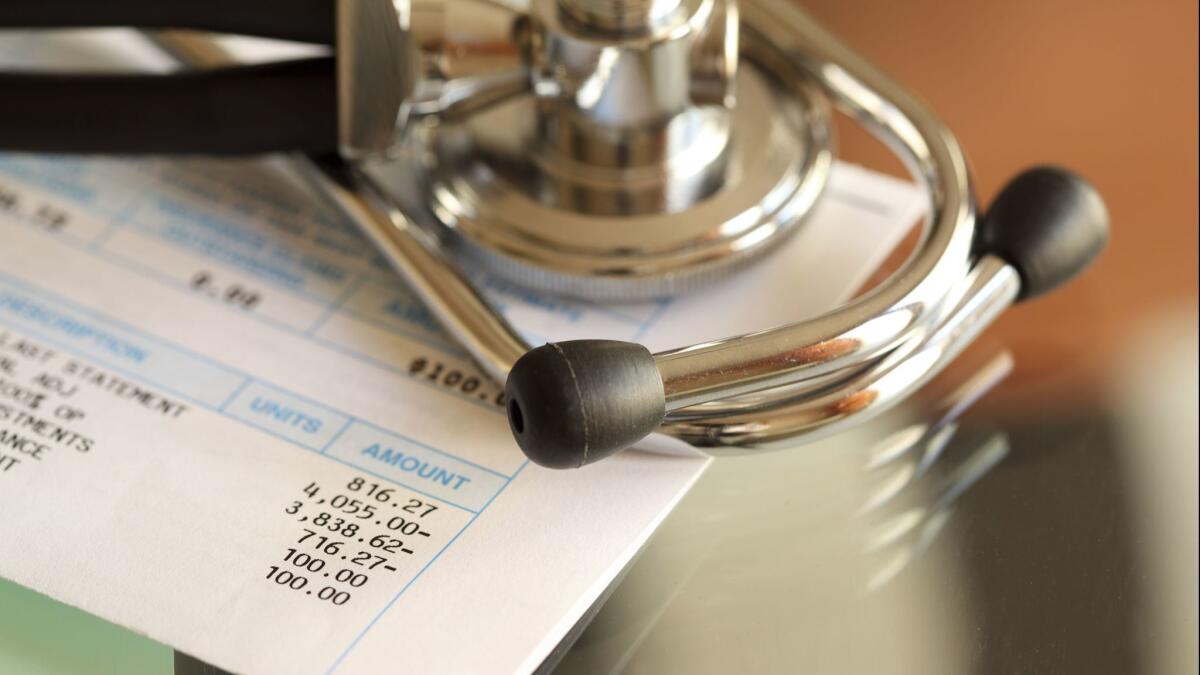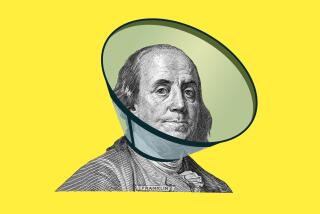The U.S. healthcare system needs more skills for paying bills, study shows

- Share via
Healthcare in the United States is really expensive, and one of the reasons is that managing healthcare bills is really, really expensive.
Just how expensive? At one large academic medical center, the cost of collecting payments for a single primary-care doctor is upward of $99,000 a year.
And billing for primary-care visits is a bargain compared with billing for trips to the emergency room, a hospital stay or a surgical procedure, according to a report published Tuesday in the Journal of the American Medical Assn.
Researchers from Duke University and Harvard Business School figured this out by reconstructing the entire life cycle of a medical bill — from the time a patient makes an appointment until the time the health system pockets the money for the services rendered. They applied their analysis to five types of “patient encounters,” as they put it.
Members of the research team conducted 27 interviews with people involved at various points in the billing process to understand every single step along the way. They also surveyed 34 doctors to understand their billing-related activities, such as submitting prior authorization requests to health insurance companies.
Once they had mapped out the entire billing process, they used salary information from the medical center to determine the cost of carrying out each step. They also added in overhead costs such as office equipment and utility bills.
These were the results:
• It cost $20.49 to get paid for a typical primary-care visit, and took 13 minutes of processing time.
• It cost $61.54 to get paid for a typical trip to the emergency room, and took 32 minutes of processing time.
• It cost $124.26 to get paid for a typical hospital stay, and took 73 minutes of processing time.
• It cost $170.40 to get paid for a typical outpatient surgical procedure, and took 75 minutes of processing time.
• It cost $215.10 to get paid for a hospitalization that required surgery, and took 100 minutes of processing time.
If those numbers aren’t enough to make you sick, consider this: For most healthcare providers, the true costs of billing are probably higher — perhaps much higher.
The medical center in the study handles so many patients that it created a separate company just to handle the bills. Its centralized system — which employs the equivalent of 1,500 full-time workers — surely benefits from economies of scale that are not shared by smaller providers, the study authors wrote.
Also, the flow chart that represents the life cycle of a bill left out several expensive items. These include the cost of negotiating prices with insurance companies, the cost of training doctors to handle billing-related tasks, and the cost of making sure that every potentially reimbursable service is added to the bill.
The study authors didn’t even attempt to tally the “considerable costs” to insurers of processing and paying all of these bills. If they had, the total costs to the system could have been much higher — especially since some studies have found that the bill-related costs of payers are even higher than the bill-related costs of doctors and hospitals.
Feeling outraged? Dr. Vivian S. Lee, a radiologist at the University of Utah, and Bonnie Blanchfield, a senior scientist and former CPA at Brigham and Women’s Hospital in Boston, are way ahead of you.
“The unnecessarily complex, fragmented, and inefficient system of billing, coding, and claims negotiations in the US health care system employs enough people to populate small nations,” the pair wrote in an editorial that accompanied the study.
There is no apparent reason for this, they argued. Outside the healthcare industry, it might take about 100 full-time workers to collect $1 billion worth of bills. But when doctors are involved, it takes “an astounding 770 full-time equivalents” to collect the same amount of money, they wrote.
“The process of moving money from payer to hospitals and physicians in the United States consumes an estimated $500 billion per year,” they continued.
And that doesn’t include the psychological costs of dealing with medical bills, Lee and Blanchfield wrote. Ailing patients can’t afford this extra layer of stress, and even doctors are mystified by their own families’ medical bills.
America simply can’t afford to keep paying its medical bills this way, they concluded: “Now is an opportune time to start unraveling the Gordian knot of health care billing … for the sake of the health — both physical and financial — of patients.”
Follow me on Twitter @LATkarenkaplan and “like” Los Angeles Times Science & Health on Facebook.
MORE IN SCIENCE
Medic! Ants injured while hunting for termites get help from paramedic-style triage system
In mice, a single vaccine prompts the immune system to fight breast, lung and skin cancers
The much-maligned flu shot has reduced the risk of serious illness this year by 36%, CDC says







